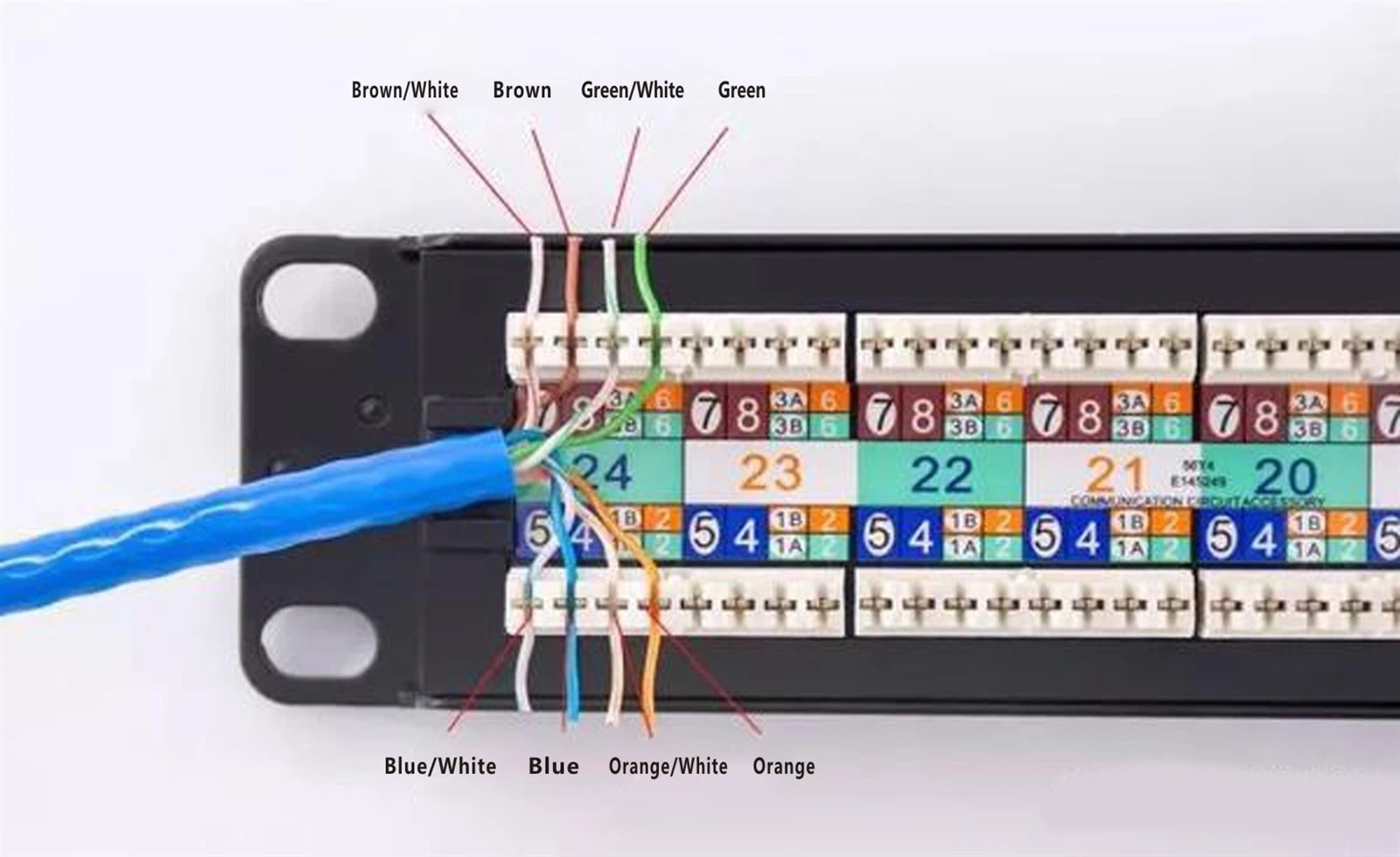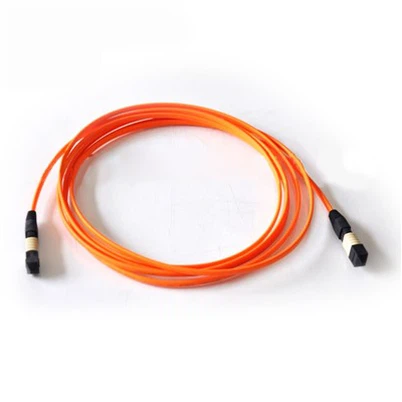Network Patch Panel and Keystone Module Wiring Techniques, and Tool-Free Modules
Oct 29, 2024
Leave a message
1. Network Patch Panel Punching Method:
1.1 Preparation Tools:
Network patch panel, cable manager, network cable, wire stripper, crimping tool, zip ties.
1.2 Network Patch Panel Wiring Process:

A. Use a small yellow tool or wire stripper to remove the outer jacket of the network cable.
B. Stripped outer jacket of the Cat6 cable.
D. Insert the network cable into the corresponding terminal slots according to the specified sequence.
E. Use the crimping tool to trim the excess cable.
F. Attach the cable manager to the patch panel port.
G. Secure the cable to the cable organizer with zip ties to prevent it from falling off.
H. Use cabinet screws to fix the network patch panel to the network cabinet.
1.3 T568B Wiring Sequence:

A. Note the wiring sequence on the patch panel when wiring, as T568A and T568B have different sequences.
B. Different brands of patch panels may also have different wiring sequences, so always pay attention to the sequence markings on the patch panel.
2. Keystone Jack Module Wiring
2.1 Preparation Tools:
Network panel, keystone module, small yellow knife, network cable, scissors.
2.2 keystone Module Punching Process:

A. Use a small yellow knife or wire stripper to remove the outer jacket of the network cable.
B. Arrange the wires according to the jack module's wiring guide and place them on the jack module's wire clamps.
C. Use the small yellow knife to press the wires into the wire clamps.
D. During the pressing process, the pliers must be held vertically and apply a sudden, firm pressure to press down in one go.
E. Trim the excess network cable.
F. Finished the keystone jack installation.
G. Insert the keystone jack into the panel.
H. Finished product.
2.3 T568 Wiring Sequence:

Follow the color-coded wiring sequence indicated on the module.
3. Tool-Free Patch Panels and Keystone Modules
Both work on the same principle, using the module's built-in clips to press the network cable directly into the module's wire clamps, eliminating the need for punching down steps.










